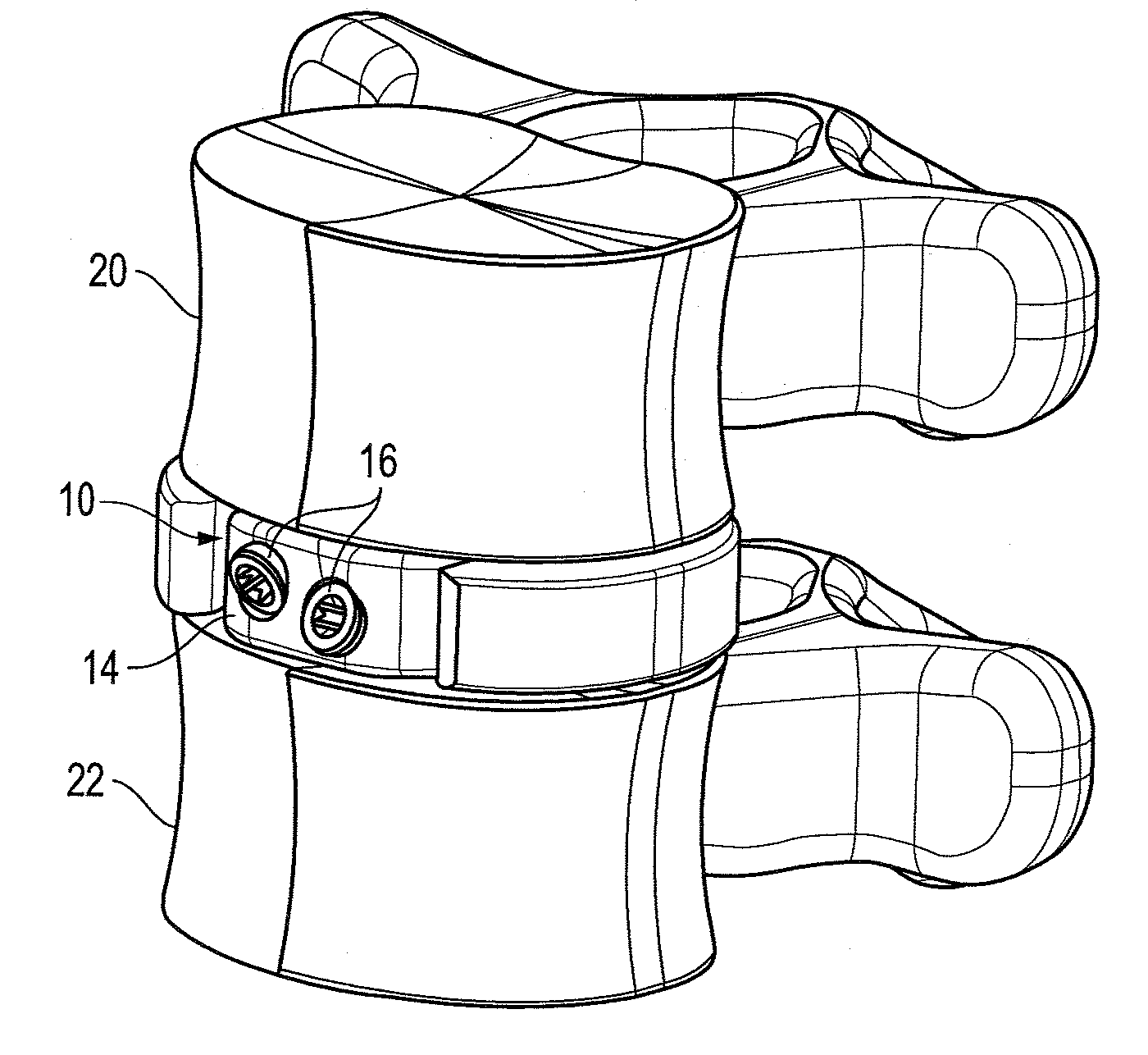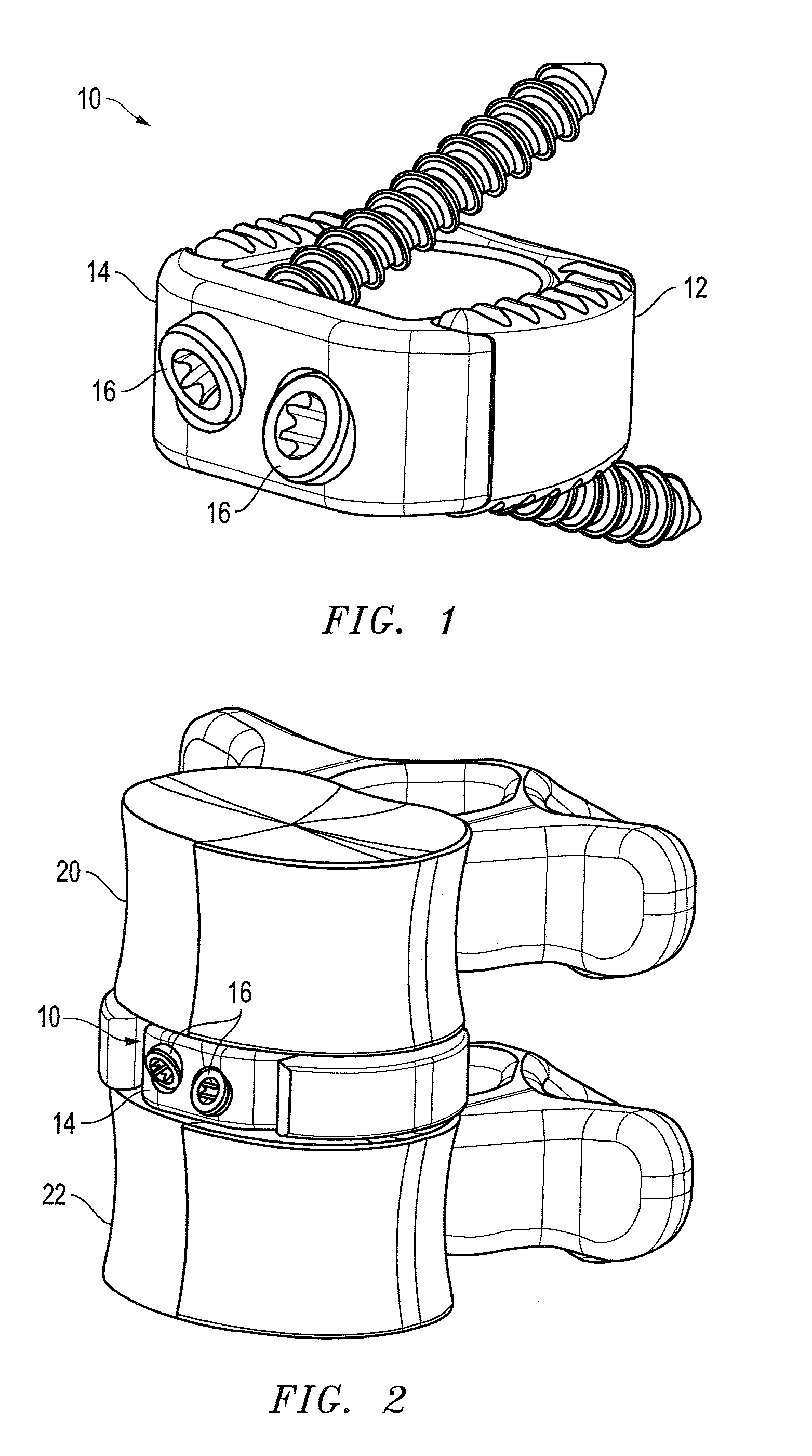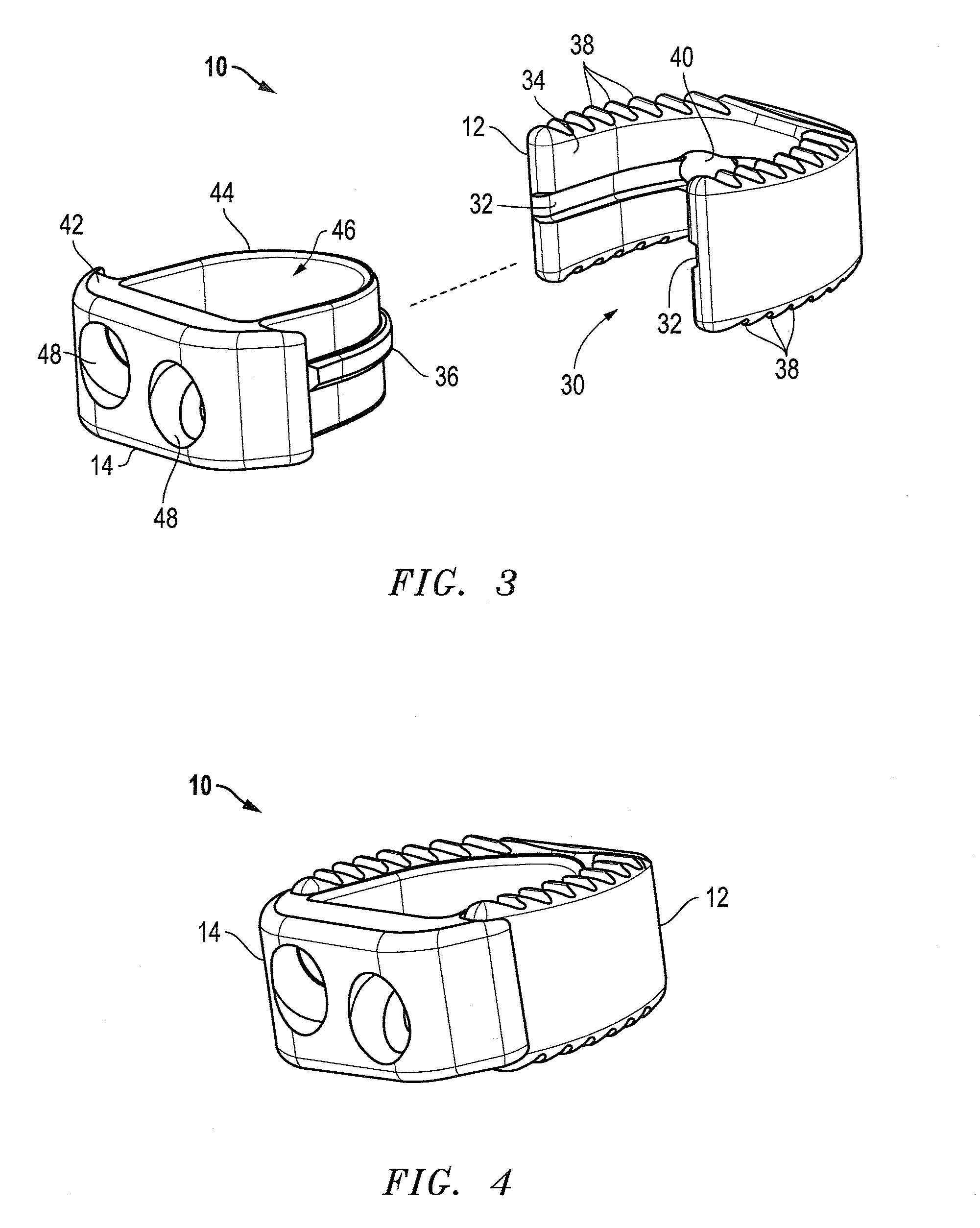Interbody fusion device with lipped anterior plate and associated methods
a fusion device and anterior plate technology, applied in the field of spinal fusion, can solve the problems of degeneration of the spine, pain and/or nerve damage, destabilization of the spine,
- Summary
- Abstract
- Description
- Claims
- Application Information
AI Technical Summary
Benefits of technology
Problems solved by technology
Method used
Image
Examples
Embodiment Construction
[0032]The present invention relates to spinal fusion implants and related spinal fusion procedures for use in cervical and lumbar applications. One type of spinal fusion is interbody fusion. Typically, an interbody fusion procedure places a bone graft between the vertebra in the area normally occupied by an intervertebral disc. In preparation for a spinal fusion procedure, the intervertebral disc is removed entirely. A device may be placed between the vertebra to maintain spine alignment and disc height. Fusion then occurs between the endplates of the vertebrae. In some examples, fusion is augmented by a process called fixation, meaning the placement of screws; rods or plates to stabilize the vertebra to facilitate bone fusion. The present invention provides an interbody fusion device that overcomes problems found in the prior art.
[0033]Generally, the present invention provides a two piece interbody fusion device that may be used with anterior lumbar interbody fusion (ALIF). In one ...
PUM
 Login to View More
Login to View More Abstract
Description
Claims
Application Information
 Login to View More
Login to View More - R&D
- Intellectual Property
- Life Sciences
- Materials
- Tech Scout
- Unparalleled Data Quality
- Higher Quality Content
- 60% Fewer Hallucinations
Browse by: Latest US Patents, China's latest patents, Technical Efficacy Thesaurus, Application Domain, Technology Topic, Popular Technical Reports.
© 2025 PatSnap. All rights reserved.Legal|Privacy policy|Modern Slavery Act Transparency Statement|Sitemap|About US| Contact US: help@patsnap.com



